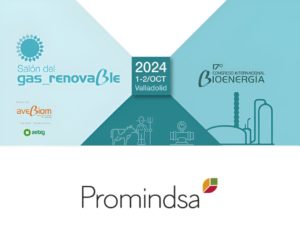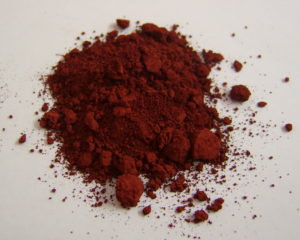Biogas, as a renewable energy source, is a very important factor contributing to sustainable development through the circular economy.
What is biogas and what is its potential?
What is biogas?
Biogas is a mixture of components, mainly methane (CH₄) and carbon dioxide (CO₂) produced by the biochemical degradation of organic matter in the absence of oxygen, a process known as anaerobic digestion. Feedstock for this process includes food crop residues, livestock waste, catch crops and industrial waste.
Natural iron oxide is extracted from mines, once extracted, this material goes through a selection process where it is classified by its iron oxide content, then it goes to the grinding and classification phase and finally to the packaging one, which then is commercialized in the different industrial markets.
Energy capacity of biogas
According to the International Energy Agency, biogas and biomethane production can reach 407 TWh, potentially covering up to 20% of global gas demand. This underlines the immense potential of biogas as a renewable and sustainable energy source.
What are the benefits of biogas?
-
Waste reduction
The production process not only generates energy, but also produces digestate, a by-product that is used as a fertilizer, helping to replace chemical fertilizers and reduce waste accumulation.
-
Renewable energy production
It is a 100% renewable source that significantly helps reduce greenhouse gas emissions, supporting global efforts against climate change.
-
Conversion to biomethane
It can also be purified to produce biomethane, which has properties identical to natural gas and can be used for heating, cooking, transportation and electricity generation, integrating easily into the existing gas infrastructure.
This purification consists of reducing toxic/hazardous compounds and increasing the concentration of methane (approximately 90% CH4).
The circular economy and biogas
The integration of biogas into the circular economy represents a key strategy for achieving long-term sustainability in resource management and energy production.
Some of the critical roles biogas plays in the circular economy are:
1. Sustainable waste management.
Biogas harnesses organic waste, which would otherwise accumulate in landfills, releasing methane and other harmful gases into the environment. Through anaerobic digestion, this waste is transformed into biogas and digestate, closing the nutrient cycle and reducing the need for landfills. This process aligns waste management with the principles of reduction, reuse and recycling that underpin the circular economy.
2. Promoting sustainable agriculture
Digestate, the product of anaerobic digestion of biogas, is a nutrient-rich organic fertilizer that can replace chemical fertilizers. Its use in agriculture not only improves soil health and increases resource efficiency but also reduces reliance on synthetic chemical inputs, supporting greener and more sustainable farming practices. It also reduces the carbon footprint of agricultural activities by replacing fossil fuels with a renewable alternative.
3. Impact on rural development and local employment
Biogas facilities are often located in rural areas, where organic materials such as agricultural residues and manure are more accessible. These facilities not only provide energy locally but also create direct and indirect jobs, from operation and maintenance of the biogas plants to logistics and administration. The development of biogas projects can be an economic driver for rural communities, providing new income opportunities and fostering sustainable development.
4. Contribution to local energy resilience
Biogas generates an energy source that is both flexible and local, helping communities to be more resilient to energy price fluctuations and supply disruptions. By generating energy from local resources, communities can reduce their dependence on imported fossil fuels and improve their energy security.
5. Integration with other renewable technologies
It can be complemented with other forms of renewable energy, such as solar and wind, to create more robust and sustainable energy systems. For example, it can generate power on a consistent basis, which compensates for the variability of solar and wind power. This integration can maximize the use of renewable resources and minimize the need for energy from non-renewable sources.
The Green Future
Biogas is not only a crucial source of renewable energy, but also a catalyst for a greener, more sustainable future. Its role in the circular economy is fundamental to closing the resource cycle and protecting our planet, making biogas a key piece in the sustainability puzzle.








